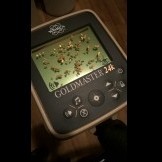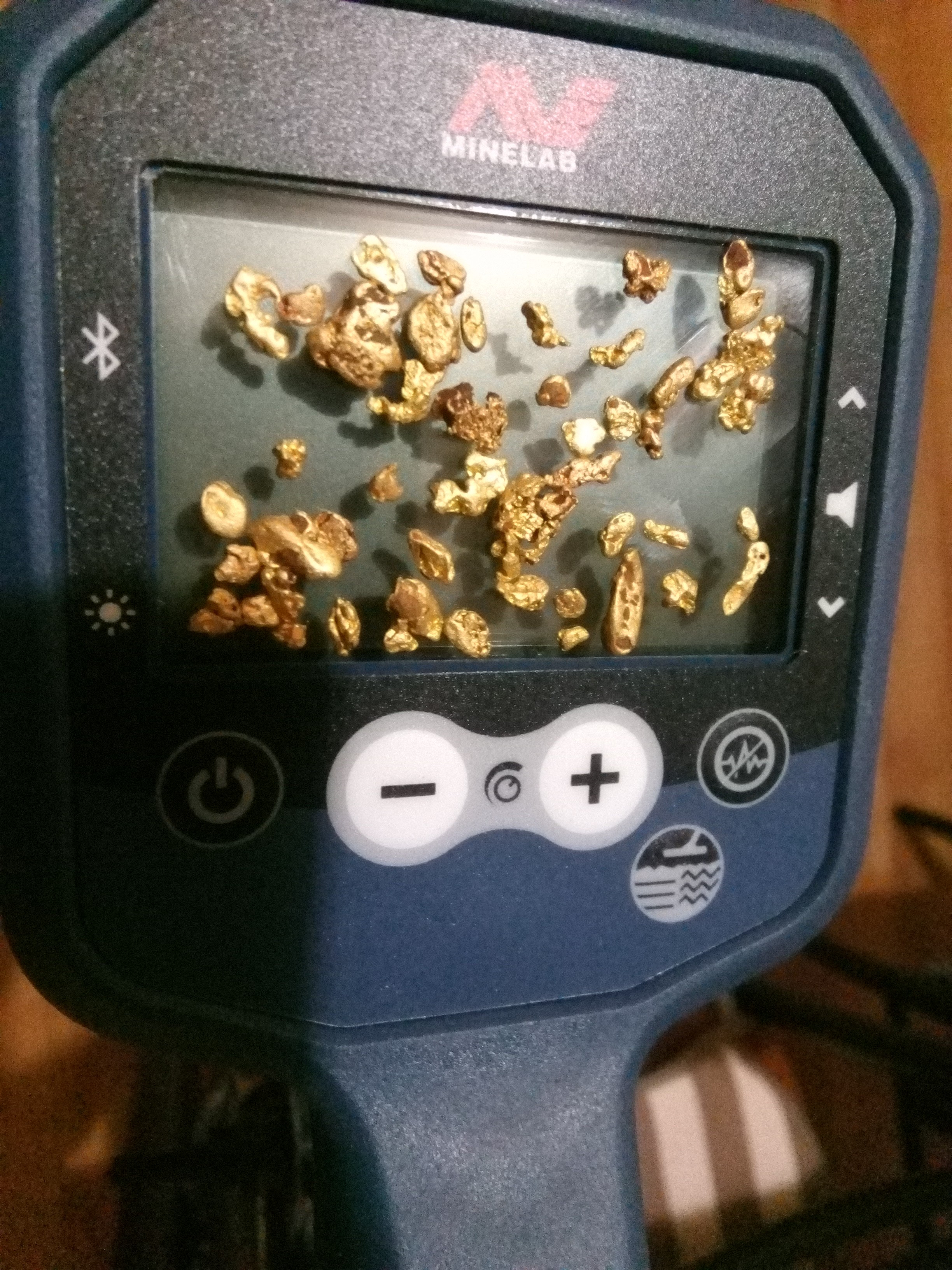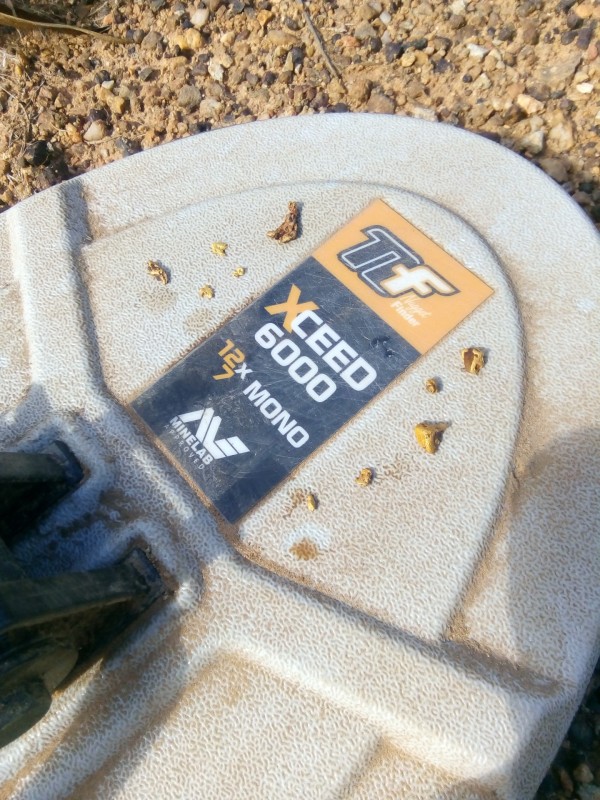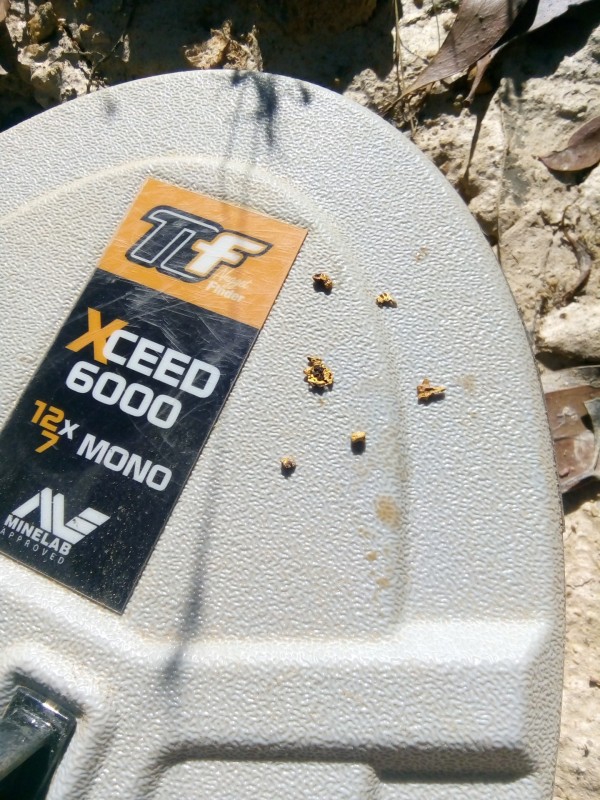-
Posts
1,050 -
Joined
-
Last visited
Content Type
Forums
Detector Prospector Home
Detector Database
Downloads
Everything posted by Aureous
-

Nuggetfinder Coils Release Dates For The 6000 & 7000?
Aureous replied to Sourdough Scott's topic in Detector Prospector Forum
If all the parts are directly on hand, any coil can be assembled by a single person within 3 hours. The longest time constraint is shielding drying time and the loom winding, whether firmed or enamel-baked. If the looms are ready to go prior, then 3 hours is plenty. NF makes their own shells and this takes extra time, Coiltek outsource this task so that multiple shells are ready at an instant. -
Many years ago, an Aussie elec engineer made an add-on device that attached to your metal detector which was a mini magnetometer for determining if those deep targets were actually worth digging. 90% of deep targets tend to be iron of course and the mag would enable the user to 'yes or no' the target. I think the concept failed due to the weight which was added.
-
I'm not very familiar with the XRF handheld units, but the Bruker range appears to be able to analyze multiple metals on rock faces without prior grinding. So, on the 'face' of it, thats a YES. Would still need a multi kilo assay done to determine mine-ability though. Determine the width of the ore vein and then channel sample it across the full width.
- 9 replies
-
- detector review
- geology
-
(and 1 more)
Tagged with:
-

GPX 6000 And Powerlines With Mono Coils
Aureous replied to RONS DETECTORS MINELAB's topic in Minelab Metal Detectors
Yeah MG super shield. Nasty stuff though, had Toluene in it. Smelt like Juicy Fruit chewing gum if I recall..... Worked really well on coils like you said. Still not as highly reflective as Copper apparently? -

GPX 6000 And Powerlines With Mono Coils
Aureous replied to RONS DETECTORS MINELAB's topic in Minelab Metal Detectors
Hmmmm the copper tape idea is a good one, I forgot about that stuff. Used a lot on elec guitars..... I'll buy some and give that a go. I'll try single layer, dual layer etc. <scratching chin> -

GPX 6000 And Powerlines With Mono Coils
Aureous replied to RONS DETECTORS MINELAB's topic in Minelab Metal Detectors
Wes, I'm sure any shielding would help but copper sheet is by far the best form of EMI shield. Its what is used on all medical devices nowadays. Faraday wire screen or wired tape is well worth a try, as is Aluminum. Flattened steel wool even works well! But copper sheet is easy to bend and you can apply black tape over it to avoid scratching. A couple of elec engineers I've spoken to suggest that over 40% of the noise is absorbed via the oscillator and receive circuitry of PI detectors. The excellent aftermarket coils now available are very well shielded, compared to the stock 11 coil, so that alleviates a significant degree of noise there now. Just needs the control box covered now.... -

GPX 6000 And Powerlines With Mono Coils
Aureous replied to RONS DETECTORS MINELAB's topic in Minelab Metal Detectors
On another note, I tried the new 12x7 at the aforementioned property for 3 hours today for the 1st time and the results surprised me! No noise resulted in 10 bits incl two half grammers for 2.11 grams total. The new coil with the audio mod seems to have quietened down the 6000 to a very satisfactory degree. Back there tomorrow -
As mentioned above, copper mineralization. Malachite and/or Chrysocolla and a few specks of Azurite. As GC says, the iron oxide associated with Copper is often an indicator for associated gold mineralization. Take a few kilo samples and have it assayed.
- 9 replies
-
- detector review
- geology
-
(and 1 more)
Tagged with:
-

GPX 6000 And Powerlines With Mono Coils
Aureous replied to RONS DETECTORS MINELAB's topic in Minelab Metal Detectors
Yeah they work well enuff but coz they're open ended (for control & switch access), it was never gonna be a perfect fix. BUT, the 6000 has all the controls on the handgrip pad. So someone could make up full (perhaps folding) shield with just the coil input and speaker-battery sections open. It could make the 6000 an even better machine for EMI with the mono coils only.... -

GPX 6000 And Powerlines With Mono Coils
Aureous replied to RONS DETECTORS MINELAB's topic in Minelab Metal Detectors
I echo that statement. I have a property where I detect often, it has a huge HV power line and 2 smaller household lines running thru it. I find that with the stock 11 mono, I can reach areas 50% closer with the 6000 than with the 4500. With the NF 12x7 mono, its significantly better. I'm sure that using the Goldhawk 10x5, it would be even better again. If the control box had a shield and not just graphite paint, it would add an extra level of noise reduction. Someone needs to make a model of the 6000 control box to tool up a sheet metal press and make/sell copper shield covers, like the Rodworthy shield for the 4500/5000. -

Would A Used Gpx-4500 Package Be Worth Considering?
Aureous replied to Az_Ed's topic in Minelab Metal Detectors
The Minelab GPX4500 is the best selling PI detector in history. I found over AU$50K worth of gold with the 2 that I owned. Modded, with a small flat wound coil, its a superb machine. -

Ever Regret Buying A Detector?
Aureous replied to strick's topic in Metal Detector Advice & Comparisons
The only 2 that spring to mind that disappointed me so much that I sold them post-haste were the Garrett ATX and the QED. I was suffering from a shoulder condition for a couple years (only later did I find out that my left shoulder Bursa was severely calcified and had mangled a lot of muscle around it) and using the ATX was the last straw....it was so bulky, heavy and clunky that it aggravated my injury to the point that I had to give away heavy PI detectors for 3 whole years. I liked the idea of a light-weight Aussie made PI (the QED) and in theory sounded awesome. The finicky nature of the set up at each new location and the lack of ground tracking made it a non starter. I found gold with both machines but both detectors had serious drawbacks. I then went back to lightweight high frequency VLF detectors and focused on low mineralization dirt and got several thousand pieces of gold for my trouble....so I suppose these 2 detectors steered me in a positive direction after all.... -

GPX 6000 Speaker Audio Feedback Fix - My Experience
Aureous replied to Dutchman4's topic in Minelab Metal Detectors
After now using it post-mod for approx 30 hours, I can tell that there is a degree of noise now eliminated from the overall circuitry. The sensitivity has improved and the number of softer and smaller signals now appear from out of the bumpy threshold. The amount of difference between the speaker audio and BT headphone audio is far less apparent. I can't tell any improvement in using the headphones only, after the mod was done. But overall, there IS a benefit in getting the mod done. Obtaining an aftermarket coil adds another level of improvement. I would seriously advise every 6000 owner to do BOTH. Its like a new machine after that..... -
A lot of pretty women are high maintenance though....might cost you a lot more than the detector
-
Their 'Falke' unit is almost $6K! Not one single specific bit of information on the website, all smear and gloss-over nonsense. Not a good idea to use the 'QZ' prefix either....this is a common prefix for models of certain Chinese products. If they're trying to look professional, its a miserable FAIL.
-

Minelab Wall Hanger Trash Can Lid
Aureous replied to Gerry in Idaho's topic in Detector Prospector Forum
Pieter was the first bloke I ever saw use the RBL coil to good effect. He got a 22oz specie with it at Bob Sargeants patch near Cement Tank in West Oz. He dug over 3ft for it when I was there. He was also the first (I believe) to cut out the plastic in wedges to lighten the weight.... -
The stock 11 is a 'known beast' and as such the benefits of the 'proper' new coils are obvious to the end user. The first thing that became obvious was the noise difference. The 12x7 just purred like a kitten compared to the stock 11. It handled mineralized soil far better too. I didn't feel the need to drop down from Auto 1 hardly at all. I'm now wondering if the EMI handling is better as well.....I reckon the NF shielding is far superior to anything that the sub-contractors for Plexus in Malaysia are capable of. I only used the frequency scan once in 3 days....and that was only to see if there was any improvement on the near-perfect threshold it already had. It didn't. Once the noise difference was accounted for, any further cross testing with the stock 11 against the newer coils was mute. If I had to place a 0-100 'score' on the overall 'noise' of the 12x7 versus the stock 11 it would be: NF Xceed 12x7: 90/100. Still a little bumpy threshold but barely affects signal clarity and ground noise was greatly diminished. Zero EMI, no scans necessary. Y Axis noise still present but very stable up until C. 40 degrees. ML Stock 11: 60/100. Threshold is affected to the point where tiny signals or soft signals are obscured and ground noise is noticeable as is EMI (multiple scans per day to reduce). And my stock 11 is a 'good one' lol. Y Axis noise is present at anything greater than 15 degrees.
-
I echo everything you just said lol. In the end I just got patient and waited for the 12x7 to finally arrive. Im happy I did. But now I KNOW I need another coil
-
The Y axis noise is there, but a lot less than the stock 11 until you get to approx 40 degrees. But my main reason for loving the 12x7 is that it makes a perfect replacement for the stock 11.....its more sensitive and faaaar quieter. Its narrow width becomes more useful than initially realized too.
-
I concur, although I saw a more noticeable benefit than 'slight'. The 10x5, being much smaller and bundle-wound would logically 'ping' the small gold and be very quiet. The larger 12x7 would also logically hit the more solid or larger targets at a greater depth.
-
Nah made no difference.....he ran it up to Auto 1 and it was slightly more chirpy on the hot clay but the Y axis noise was still not present. I was very impressed. No doubt the small diameter of the coil has a big influence on this...
-
OK, Ive had 3 full days with the 12x7 (23 bits for 2.1gm) and yesterday I got a chance to look at the Coiltek Goldhawk 10x5 on a friends 6000. We marked some targets and cross tested both coils. My take on the 3 coils (11" stock, 12x7 and 10x5) are as follows. 11" stock ML mono now stays in the cupboard unless I need a backup coil. The 12x7 NF mono is now my new standard coil for most outings, it can cover the tasks for going over old workings/tailings and slopes/hillsides and its benefits are amazing quietness and improved sensitivity over the stock coil. I was hitting bits of gold so tiny that it often took 5 minutes to find the specks! 1/2 pinhead sized wasn't uncommon. BUT, the 10x5 Goldhawk was a BIG surprise.... it had ZERO Y axis noise, nuthin at all.... It had the same incredible sensitivity as the 12x7 but a much louder and obvious response. The smaller size and bundle-wound design improved the tiny gold response significantly. My friend is getting C. 10 tiny bits per hour on most flogged old diggings and I can believe it... One of the signals we cross tested with the 12x7, I couldn't hear. It was a flat bit of birdshot but my 6000 with the 12x7 couldn't hear it at Auto 1, and he was hearing it easily with the 10x5 on only manual 4! A couple meters away he got another clear zap (that I didn't detect) and pulled a micro bit of gold from about 4". So, my future sees the 12x7 on my 6000 most of the time, BUT I'll be saving for a 10x5 now in order to hit all the old workings that I know has a sh*tload of tiny gold still present. TBH, I wasn't expecting this, but the Coiltek Goldhawk 10x5 is a killer coil for the tiny shallow gold and its perfectly quiet no matter what angle you use it. No doubt the Xceed 8.5x6 will be similar to the Goldhawk 10x5 in performance but we're gonna have to wait a few months for that. Hope my report helps some people to choose...
-

GPX 6000 14" DD Coil Videos, Finds, Discussion & Tips
Aureous replied to Northeast's topic in Minelab Metal Detectors
There is no common sense barrier to making smaller DD coils...Wire can be fitted easily into a medium sized shell. Look at the old Commander DD elliptical for instance.....smallest DD for a PI detector that I can think of.... I for one will heartily welcome at least an 11" DD or ideally a 12x8 DD. The only 'wait a while' is the coding of the chips by Minelab once the design for a smaller DD is tested. I think Trevor @ Coiltek has made some noises about a smaller DD, so thats encouraging. -
Had a quick run of 3.5 hours this afternoon with the new Xceed 12x7. Right away it was obvious just how much quieter this coil makes the 6000. Y axis noise was still there, but mainly when the coil is tilted at more than 40 degrees. Below that, it was far more pleasant than the stock 11" mono. Sensitivity was still great and I couldn't detect any loss or difference from the stock coil. I found that with the overall increase in stability, I used it the whole time in Auto 1 and swapped between normal and difficult when the ground dictated. I found that the coil windings appear to be dual layer flat-wound as I could get a signal 5cm in from the edge of the coil. There also wasn't the sharpness of signal that indicates a bundle-wound coil. The color is a light pale grey and not exactly white. Looks nice! Only minor downside that I could find was that coz its a narrow coil, the detector falls over a lot easier now Pinpointing was easy and the 'NF' label acts as a good guide. I got 6 little bits on a flogged spot for .5gm which was a decent result. This was all mainly due to the detector being 50% quieter and the softer signals becoming audible. End of the story: this coil will stay on my 6000 for 90% of its time on the dirt. I will probably only change when I need a DD coil for around powerlines. Its now my 'GO-TO' coil for sure. I will be cross testing this coil with a friend soon with the stock 11" and a Coiltek Goldhawk 10x5. So, more to come.....
-

My Take On The Gpx6000 Factory Audio Mod
Aureous replied to Aureous's topic in Minelab Metal Detectors
I sure will, hopefully I get it today in the mail and I'll post my thoughts here.



